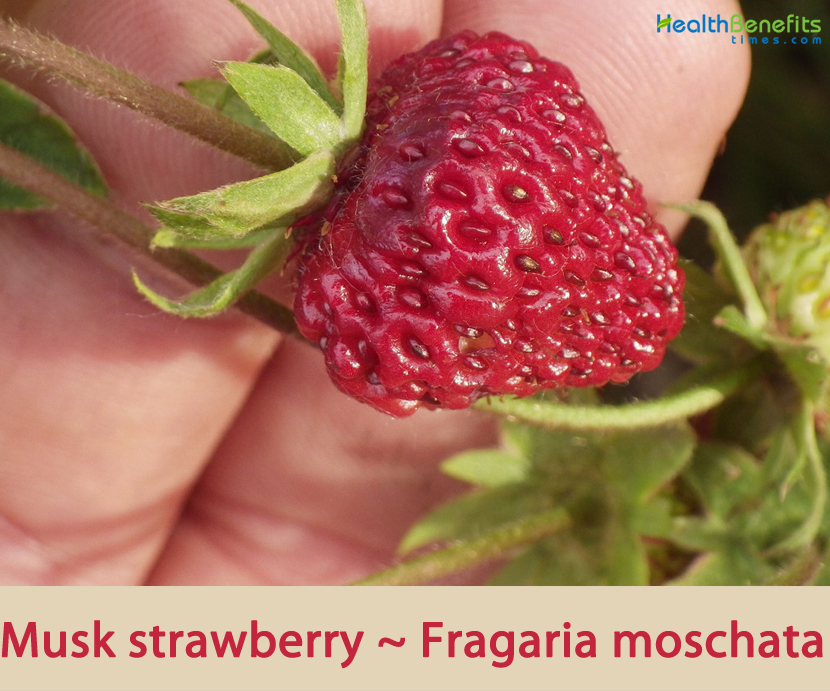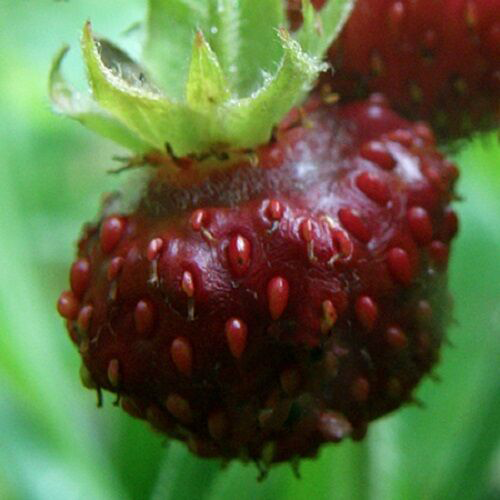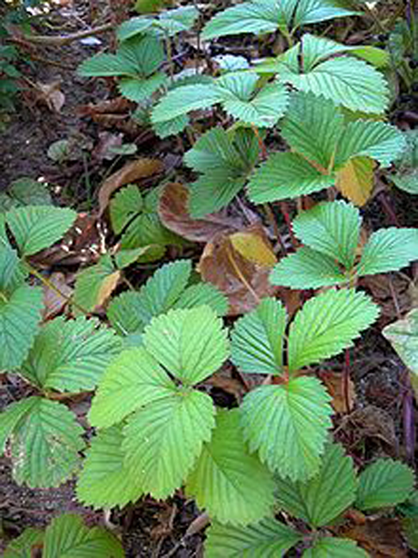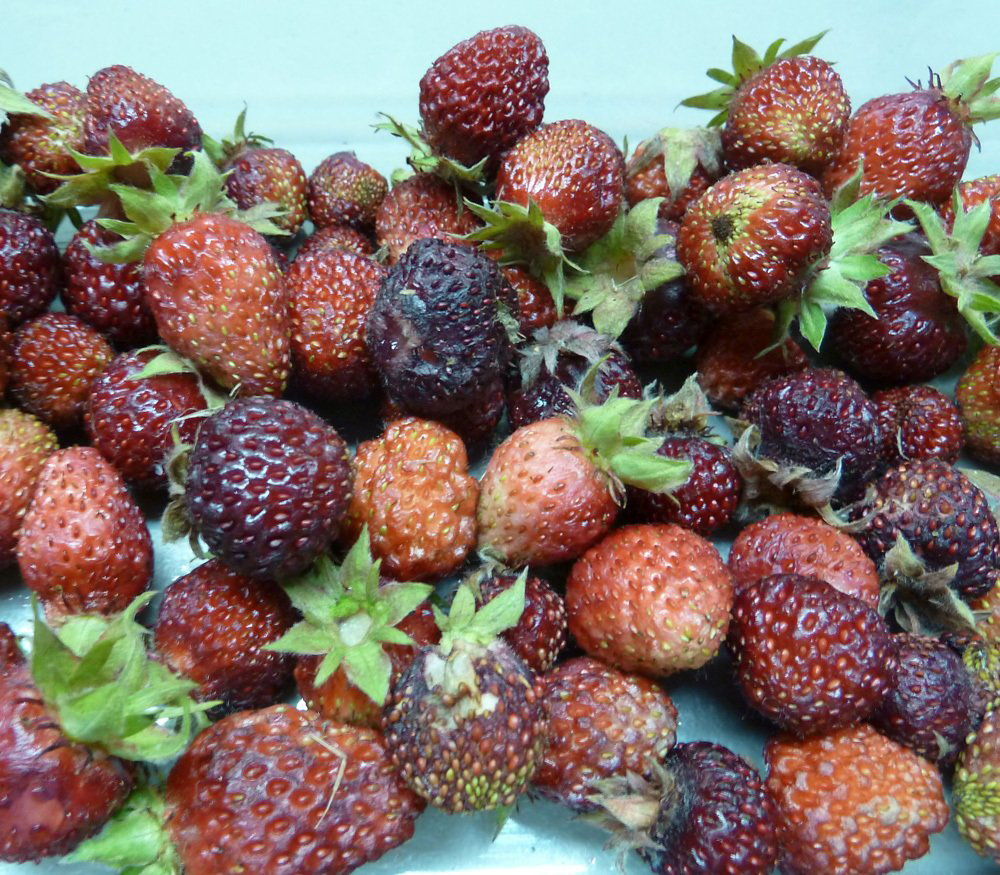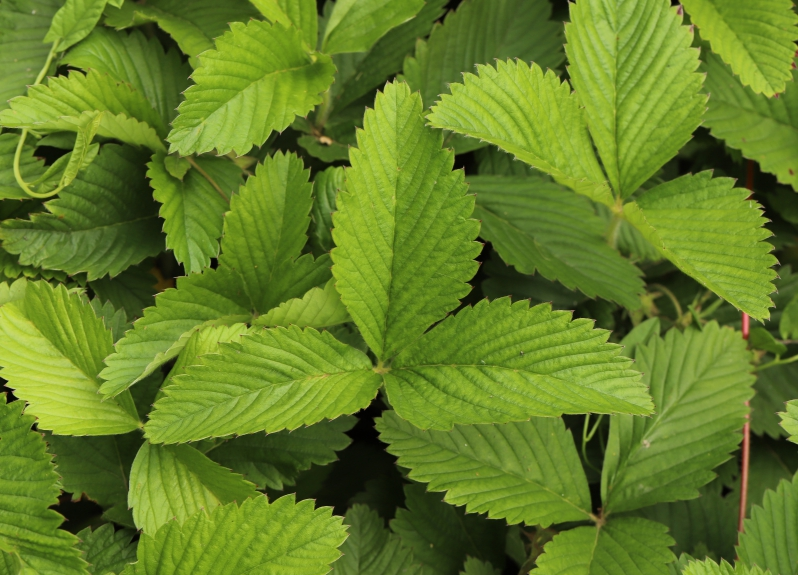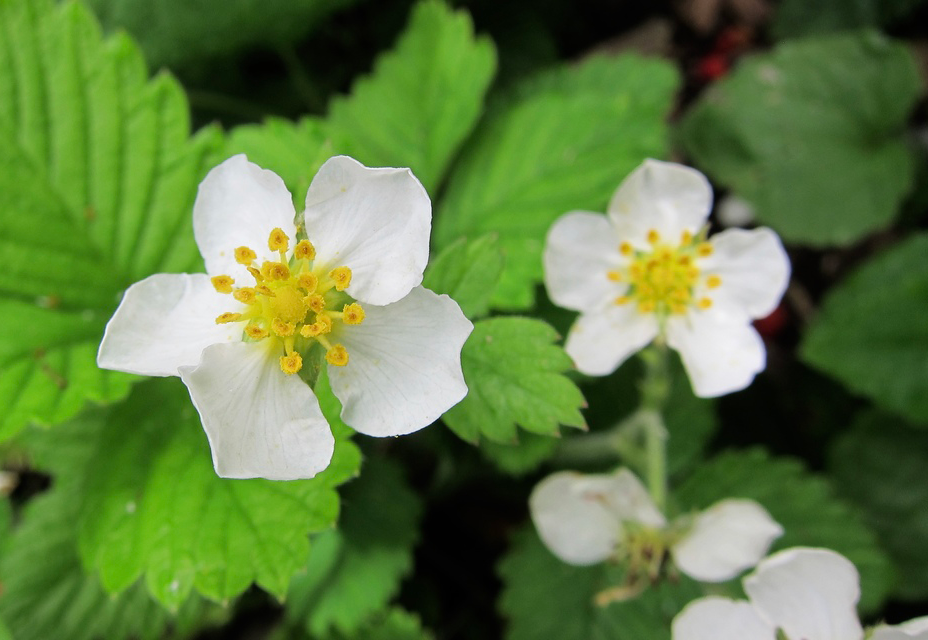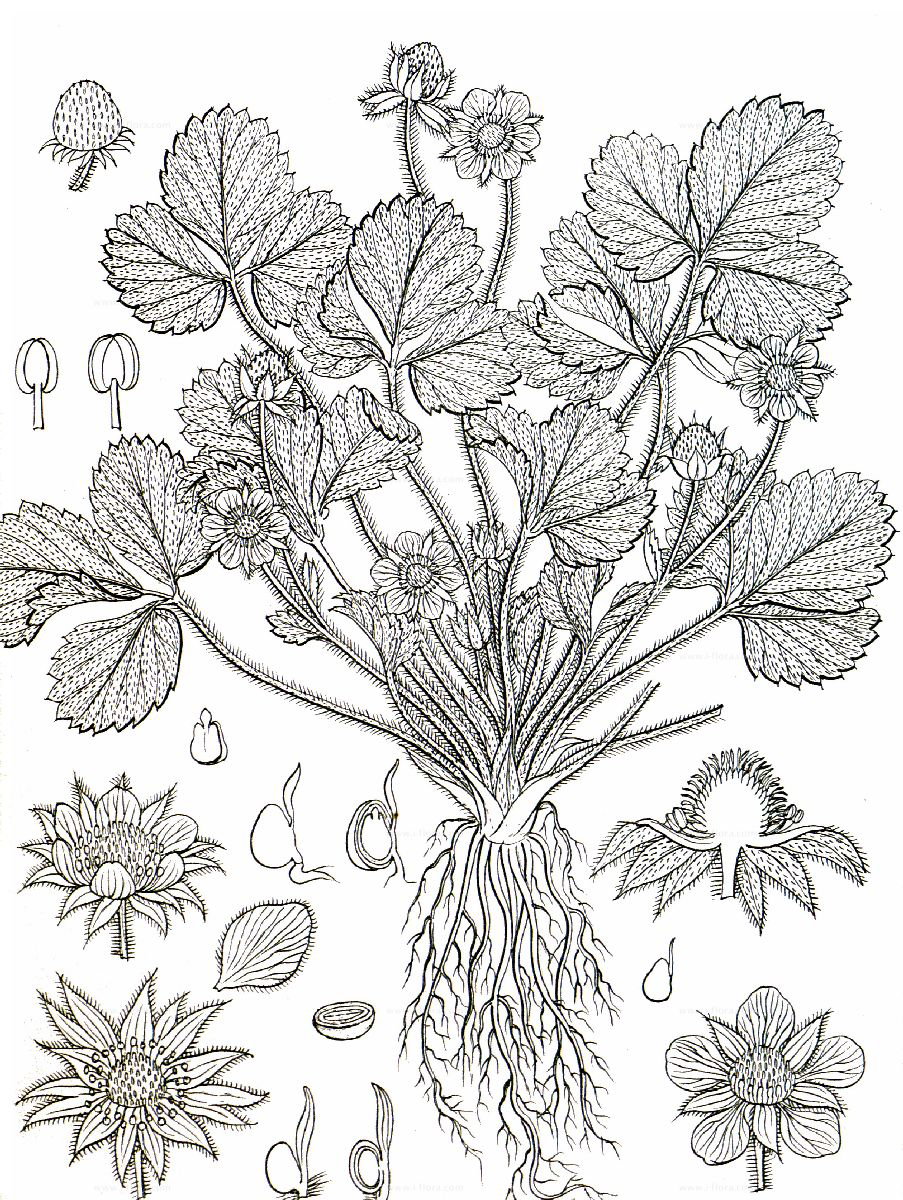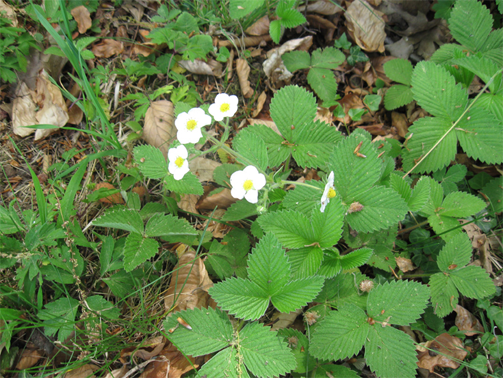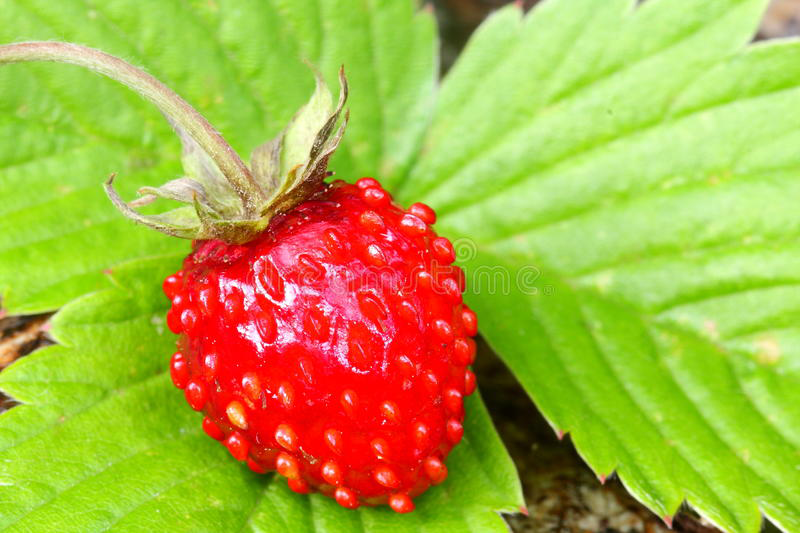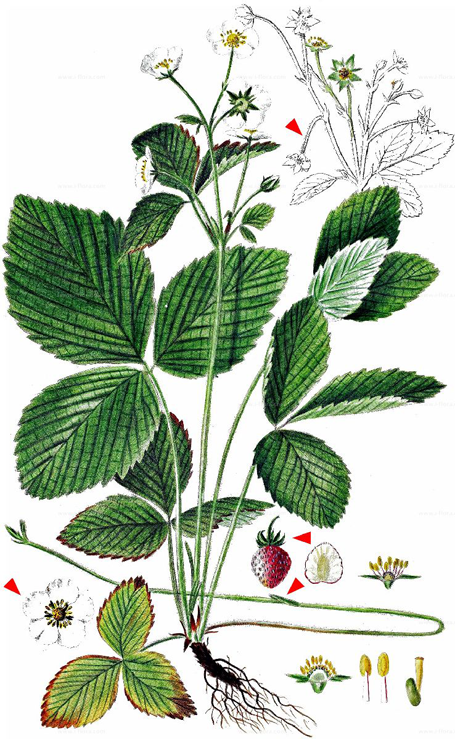The plant is harvested from the wild for local use as a food. It has at times been cultivated on a garden scale for this fruit, though is seldom cultivated at present. The plants are hardy and can survive in many weather conditions. They are cultivated commercially on a small scale, mostly in Italy. The fruit are used in the gourmet community for their intense aroma and flavor, which has been compared to a mixture of regular strawberry, raspberry and pineapple. Popular cultivated varieties include Capron and Profumata di Tortona. Some strawberry connoisseurs rate musk strawberry as the best flavored strawberry. Though its plants can still be seen in many gardens, but still there has been a decline in the cultivation of this fruit during the past 6-7 decades. However, its cultivation is still popular in Italy.
Musk Strawberry Facts
| Musk strawberry Quick Facts | |
|---|---|
| Name: | Musk strawberry |
| Scientific Name: | Fragaria moschata |
| Origin | Forests of Central Europe, north into Scandinavia, and east into Russia |
| Colors | Mottled brownish red or rose-violet |
| Shapes | Red, juicy, 1–2 cm long, berry almost achene less. They are ovoid or spherical, tapered at the base in a coccus-free collar |
| Flesh colors | White |
| Name | Musk strawberry |
|---|---|
| Scientific Name | Fragaria moschata |
| Native | Forests of Central Europe, north into Scandinavia, and east into Russia |
| Common Names | Hautbois strawberry, Hautboy strawberry |
| Name in Other Languages | Albanian: Luleshtrydhe Arabic: Tut al’ard almiskia (توت الأرض المسكي) Azerbaijani: Ətirli çiyələk Belarusian: Klubnicy (Клубніцы), sunica (суница) Chinese: She xiang cao mei (麝香草莓) Croatian: Visoka jagoda Czech: Jahoda drúzgavicová, Jahodník truskavec, Jahodník vyšší Danish: Spansk jordbær Dutch: Grote bosaardbei, Tuinaardbei English: Hautbois strawberry, Hautboy strawberry Erzya: Mastumar (мастумарь) Estonian: Kõrge maasikas Finnish: Ukkomansikka French: Fraisier musqué, Caprons, Fraisier musqué, caperonnier, fraisier caperonnier, fraisier élevé Georgian: Khendro (ხენდრო) German: Moschuserdbeere, Zimt-Erdbeere, Großerdbeere, hohe Erdbeere Greek: Frankaría moscháti (φραγκαρία μοσχάτη) Hungarian: Fahéjillatú szamóca Ingush: Beşarakomar (Бешаракомар) Italian: Fragola moscata Japanese: Furagaria mosukaata (フラ ガリア・モスカータ) Karachay–Balkar: Tuuar djilek (Тууар джилек) Kazakh: Qulpınay (Құлпынай), Qulpınaý, قۇلپىناي Kirghiz: Kulpunay (Кулпунай) Latvian: Smaržīg, smaržīgā zemene Lithuanian: Aukštoji žemuogė, Muskusinė braškė, miškinė žemuogė Lower Sorbian: Wusoka słynica Maltese: Frawli maltija Norwegian: Moskusjordbær Ossetic: Haly æryskʺæf (Галы æрыскъæф) Persian: توتفرنگی مشک Polish: Poziomka wysoka Portuguese: Morango musk Russian: Klubnika muskusnaya (Клубника мускусная), Klubnika muskatnaya (Клубника мускатная), Zemlyanika muskusnaya (Земляника мускусная), Zemlyanika muskatnaya (Земляника мускатная), Zedegene (Зэдэгэнэ) Serbian: Jagoda kitinjača (Јагода китињача) Slovak: Jahoda drúzgavicová, jahodník truskavec Slovenian: Muškatni jagodnjak Spanish: Fresa de Alemania, Fresa almizcle, Fresa almizcle, Muškatni jagodnjak Swedish: Parksmultron, Spanskt smultron, Trädgårdssmultron, Ukkomansikka Turkish: Çileği, Frenk çileği Udmurt: Muskusnoy uzy (Мускусной узы) Ukrainian: Sunytsi muskusni (Суниці мускусні) Upper Sorbian: Wysoka truskalca Vietnamese: Dâu tây xạ Welsh: Llwyn Mefus Mawr, Llwyn Mefus Mawrion Western Mari: Kogo mör (Кого мӧр) |
| Plant Growth Habit | Herbaceous perennial plant |
| Growing Climates | Forests, bushes, shrubberies, forest borders, old gardens, shrubby formations, manor houses, parks, parsonages, broad-leaved forests, hedgerows, open grassy hillsides, meadows and amongst tall grass usually in shady places |
| Soil | Prefers a fertile, well-drained, moisture retentive soil in a sunny position and tolerates semi-shade though fruit production will be reduced |
| Plant Size | 20–35 cm (8–14 in.) |
| Stem | Stem hairs spreading sideways–slightly descending oblique |
| Leaf | Large, pale green downy, basal rosette and long-stalked. Blades are palmate, with 3 leaflets. Leaflets are elliptic, with toothed margins, hairy on both sides, often creased. |
| Flowering season | April to July |
| Flower | Large, up to 2.5 cm in diameter, usually unisexual, often dioecious. Corolla is regular, white, 20–30 mm (0.8–0.12 in.) broad; petals five, 10–12 mm (0.4–0.48 in.) long. Calyx is 5-lobed; with epicalyx |
| Fruit Shape & Size | Red, juicy, 1–2 cm long, berry almost achene less. They are ovoid or spherical, tapered at the base in a coccus-free collar |
| Fruit Color | Mottled brownish red or rose-violet skin |
| Flesh | Tender white flesh |
| Flavor | Peculiar floral, spicy aroma with hints of honey |
| Propagation | By seed |
| Varieties |
|
| Season | June to August |
Plant Description
Musk strawberry is an herbaceous perennial plant with scant runners that normally grows about 20–35 cm (8–14 in.) tall. The stem is erect, 15- 30 cm high, notably longer than the bottom leaves gathered in a rosette. Runners are often absent. The stem and leaf stalks are covered with dense horizontally squarrose simple and glandular hairs. The plant is found growing in forests, bushes, shrubberies, forest borders, old gardens, shrubby formations, manor houses, parks, parsonages, broad-leaved forests, hedgerows, open grassy hillsides, meadows and amongst tall grass usually in shady places. It prefers fertile, well-drained, moisture retentive soil in a sunny position and tolerates semi-shade though fruit production will be reduced.
Leaves
Leaves are large, pale green downy, basal rosette and long-stalked. Blades are palmate, with 3 leaflets. Leaflets are elliptic, with toothed margins, hairy on both sides, often creased. Base of lateral lobes are unsymmetrical, central lobe wedge-shaped and blunt. They are broad-toothed, pilose from above, while densely silky-pilose and glaucously green from below, with protruding veins.
Flowers
Inflorescence is corymbiform, consisting of 5-12 flowers with short densely and squarrosely pilose pedicels, considerably accrescent after the end of blossoming and clad in declinate hairs. Flowers are large, up to 2.5 cm in diameter, usually unisexual, often dioecious. Corolla is regular, white, 20–30 mm (0.8–0.12 in.) broad; petals five, 10–12 mm (0.4–0.48 in.) long. Calyx is 5-lobed; with epicalyx. 20 stamens are present. Gynoecium is separate, pistils several. Male plant’s stamens are 2 times as long as (vestigal) gynoecium while female plant’s (vestigal) stamens are as long as gynoecium. Flowering normally takes place in between April to July.
Fruits
Fertile flowers are followed by red, juicy, 1–2 cm long, berry almost achene less. They are ovoid or spherical, tapered at the base in a coccus-free collar, white, greenish-white, reddening only from one side, pinkish or less frequently red, detachable from their receptacles with difficulty. Sepals in fruiting stage are spreading and descending. Berries rarely develop. Fruit are small with an intense aroma and superb flavor.
Culinary Uses
- Fruit can be consumed raw. They are sweet and succulent.
- Fruit are edible fresh and used to prepare jam and confectionary.
- The fruit is small but has an excellent flavor and is very aromatic.
- It is greatly superior to the cultivated strawberries, but is not very freely produced.
Other Facts
- It is an excellent ground cover plant, spreading vigorously by means of surface stolons and forming a dense carpet of growth.
- It grows well amongst shrubs but is likely to suffocate smaller plants.
- It is a dynamic accumulator gathering minerals or nutrients from the soil and storing them in a more bioavailable form – used as fertilizer or to improve mulch.
- The plant was also widely cultivated until the beginning of the 19th century.
- The aroma of musk strawberry is so powerful that a few ripe berries can perfume a room.
- It has been stated earlier too, musk strawberry has been rated as the best flavored strawberry and therefore is the choice of strawberry connoisseurs.
References:
https://npgsweb.ars-grin.gov/gringlobal/taxon/taxonomydetail?id=257
https://pfaf.org/user/Plant.aspx?LatinName=Fragaria+moschata
https://temperate.theferns.info/plant/Fragaria+moschata
http://www.theplantlist.org/tpl1.1/record/rjp-15608
https://findmeacure.com/2015/08/15/fragaria-moschata/
https://en.wikipedia.org/wiki/Musk_strawberry
https://www.wikidata.org/wiki/Q148730
https://gd.eppo.int/taxon/FRAMO
https://www.cabi.org/isc/datasheet/107807


